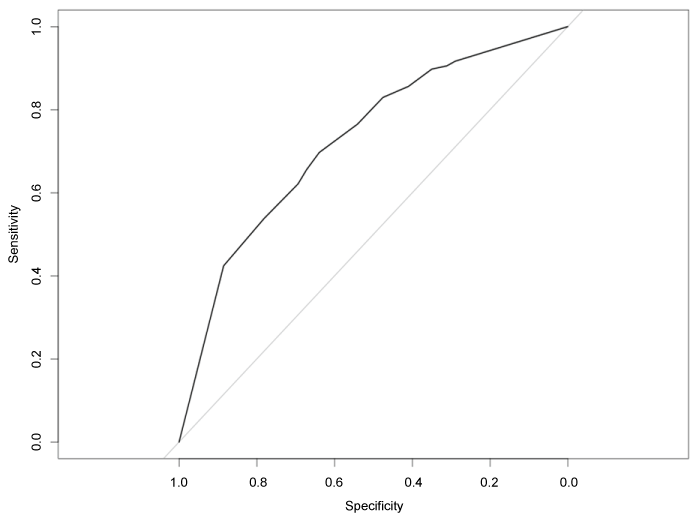Aspiration, Infection, Pneumonitis, Poisoning, Early-onset pneumonia, Prognosis
GCS: Glasgow Coma Scale
Glasgow Coma Scale (GCS) assesses the need and guides tracheal intubation in trauma patients. GCS provides a practical method for assessment of impairment of conscious level in response to defined stimuli. GCS is the sum of 3 sub-scores for eye opening (1 to 4), verbal (1 to 5), and best motor (1 to 6) response to stimulations. Low scores indicate poor level of consciousness from 3 (deep unconsciousness) to 15. Tracheal intubation is then performed in order to protect airways, decrease risk of aspiration and deliver adequate ventilation in patients with a GCS of 8 or lower. Lee and colleagues reported a secondary analysis of the LIPS cohort, where 212 (3.8%) patients presented with aspiration and 5372 (96.2%) did not [1]. Their GCS were 13 (7-15) and 15 (15-15) respectively (p < 0.0001), “significantly higher than the dogmatic threshold of 8, where elective endotracheal intubation is often considered to prevent aspiration” [1]. Moreover, its value for poisoned patients has been criticized, especially by our group, twenty years ago [2]. Accordingly, as stated by the authors, “there is unlikely to be a single threshold in which the risk of aspiration can be confidently assessed by GCS alone” [3]. We aimed to evaluate the accuracy of admission GCS and its association with subsequent aspiration pneumonia in poisoned patients.
Over a period of 18 months, we prospectively evaluated GCS in poisoned patients (mixed drugs) admitted in our toxicological intensive care unit [3]. This study was conducted in accordance with the Declaration of Helsinki. Independent ethics committee approved the protocol. Of 449 patients admitted for poisoning, 83 (18.5%) developed aspiration « bacterial » pneumonia using a consensual definition (Table 1 and Table 2). Only few patients had overt vomiting with obvious aspiration of gastric content. Tracheal intubation and mechanical ventilation were required in 236 patients (52.6%), mainly for coma and for respiratory failure in 47 patients (10.5%). Hospital mortality was 6% and was attributed to respiratory failure in 9 patients (2%) (Table 1 and Table 2).
Table 1: Demographic data of the 449 consecutive poisoned patients admitted to our toxicologic intensive care unit. View Table 1
Table 2: Clinical data of 449 poisoned patients depending on their vital status. View Table 2
The most accurate cut-off of initial GCS to predict pneumonia in poisoning patients was determined. Receiver operating characteristic analysis showed a moderate accuracy of GCS ≤ 7 in predicting pneumonia in poisoned patients with an area under the curve of 0.73 (Figure 1). GCS ≤ 7 provided sensitivity and specificity at 41% and 86% respectively (Odd’s ratio 5; 95% CI 2.9-8.6; p < 0.001).
 Figure 1: Receiver operating characteristic curve of glasgow coma scale. Receiver Operating characteristic (ROC) curve of glasgow coma scale to predict aspiration « bacterial » pneumonia in 449 poisoned patients (Area under the ROC curve = 0.73).
View Figure 1
Figure 1: Receiver operating characteristic curve of glasgow coma scale. Receiver Operating characteristic (ROC) curve of glasgow coma scale to predict aspiration « bacterial » pneumonia in 449 poisoned patients (Area under the ROC curve = 0.73).
View Figure 1
Trends of GCS add a time dimension as comatose patients may not aspirate if coma is very short like after propofol infusion. Some authors claim not to intubate patients with decreased GCS but particular poisoning and preserved airway protection [4]. In a series of severe self-poisoning, comatose patients brought non-intubated to the emergency department had a 3 fold increased risk of aspiration [5]. The rate of aspiration was doubled if the patient was unconscious but intubated on the scene or received activated charcoal in this series.
Additional increased risk by inappropriate management is often outlined by authors [5]. Prevention of gastrointestinal absorption by either gastric lavage or administration of activated charcoal can be effective if appropriate. However, several studies have shown increased risk of aspiration if performed in comatose patients or with swallowing disorders.
However, aspiration is the consequence of failure of airway protection along with existence of some material to aspirate. Several mechanisms have been separated. First, massive life threatening aspiration might be the consequence of emesis. Even with few impairment of airway protection, high volume aspiration may lead to hypoxia until anoxic cardiac arrest. Subtle dysphagia might lead to oropharyngeal chronically aspiration but with low amount material. This might be preponderant in elderly. In case of poisoning, an important and unstudied medium of aspiration could be obstructive hypopnea. This condition is often seen in poisoning with myorelaxing drugs including benzodiazepines. Glossopharyngeal hypotonia induces airway obstruction and obstructive apnea/hypopnea. In response, diaphragm contraction make intrathoracic depression that can lead to aerosolization and aspiration of the supraglottic material. One can wonder that even slightly decreased GCS do not protect from aspiration in every mechanisms.
GCS has several intrinsic limitations with imperfect inter-rater correlation. Another limitation of the GCS is the poor correlation with swallowing disorders, gag and cough reflexes which are closer to aspiration mechanisms [6]. We did not evaluate these variables in our study. We did neither report body position at the time of discovery and until airway protection but semi recumbent position was associated with fewer aspiration [7].
Tracheal intubation has consistently and independently been associated with aspiration. Our results highlight the necessity to assess the ability to protect airways by other means, including respiratory status and gag reflex, most of all in patients with GCS of 8 or over [8].
To conclude, GCS ≤ 7 was associated with aspiration pneumonia in patients with mixed-drug poisoning, with only mild accuracy.
N. Lapidus, Institut National de la Santé et de la Recherche Médicale, UMR-S 707, Paris, France.
None.